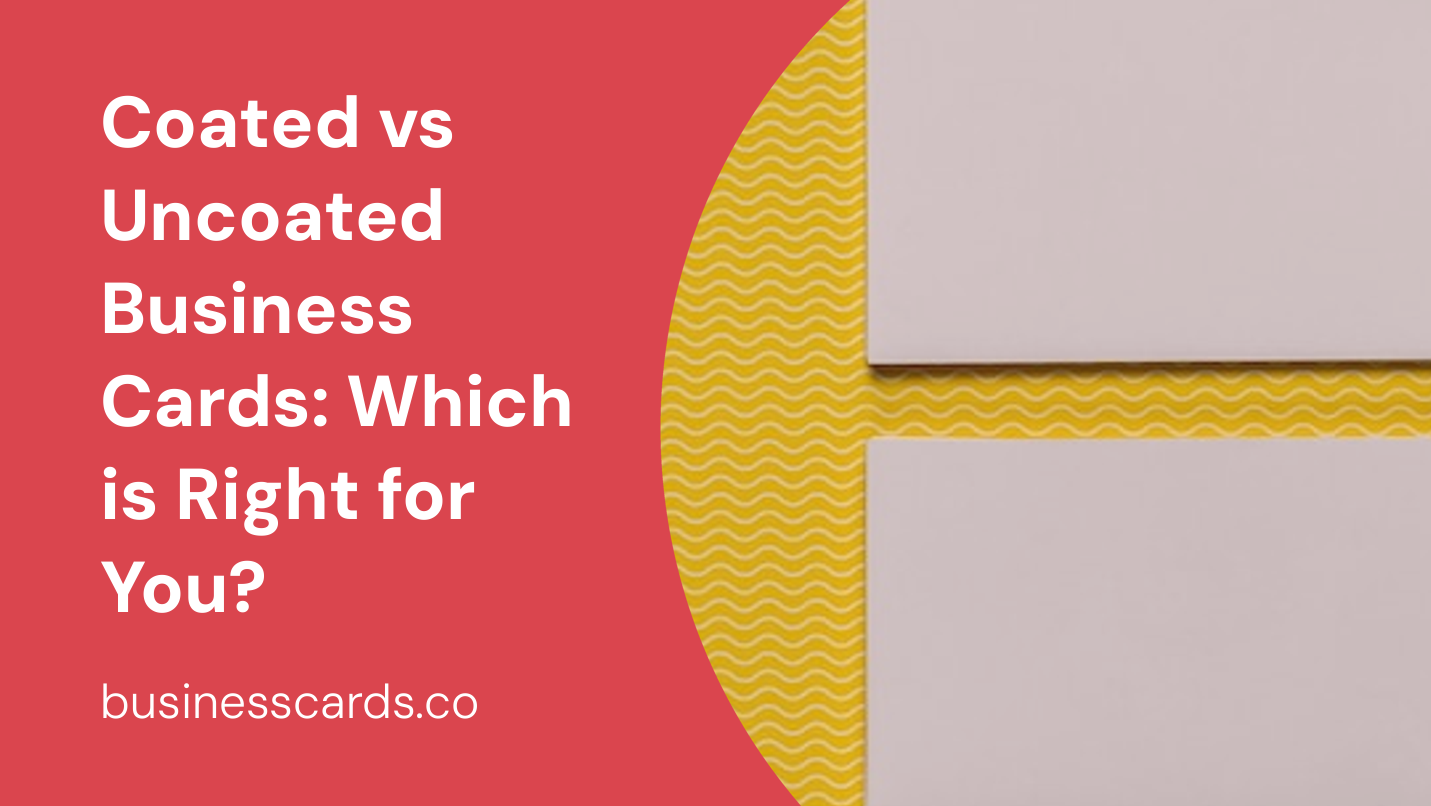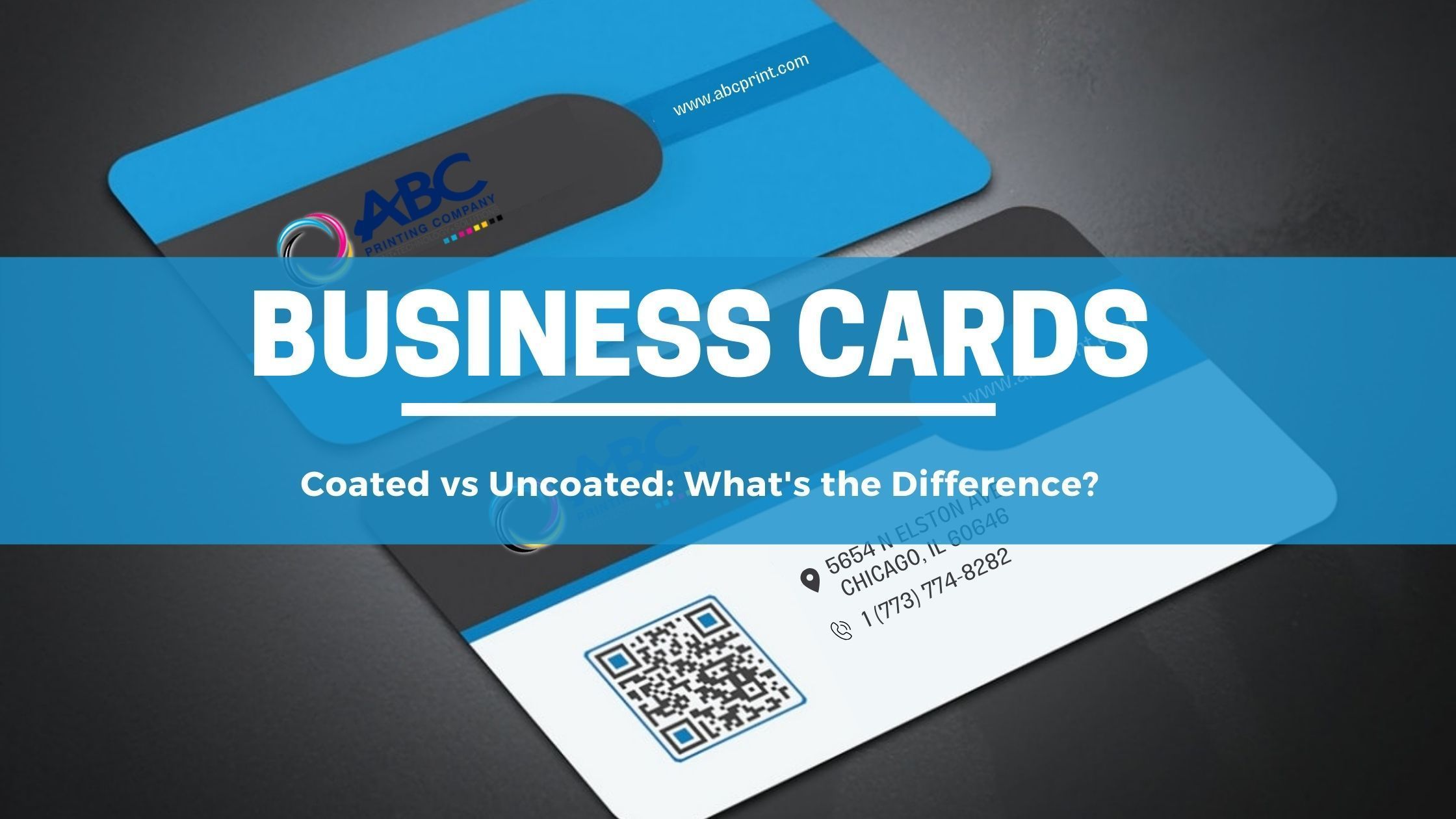
When it comes to business cards, you want to make sure you make the best impression possible. One important decision you’ll need to make is whether to go for coated or uncoated business cards. Both options have their own advantages and considerations, and understanding them will help you choose the right type of card for your business needs. In this article, we will explore the differences between coated and uncoated business cards and help you determine which option is best for you.
Understanding Coated Business Cards

Coated business cards have a glossy or matte finish that adds a layer of protection to the cardstock. This type of coating is often applied using a process called varnishing or laminating. Varnishing adds a thin layer of protective coating either on one side or both sides of the card. Laminating, on the other hand, involves sandwiching the card between two layers of film, providing extra durability and protection.
Advantages of Coated Business Cards
One of the main advantages of coated business cards is their durability. The added layer of protection helps prevent smudging, scratching, and fading. This makes them an excellent choice for individuals who handle their business cards frequently or for businesses that want their cards to withstand the test of time.
Another advantage of coated business cards is their professional and high-end appearance. The glossy or matte finish gives the cards a sleek and polished look that can make a lasting impression on potential clients or partners. The coating also enhances the colors and design elements, making them vibrant and eye-catching.
Considerations for Coated Business Cards
While coated business cards offer several benefits, there are a few considerations to keep in mind. The glossy finish can sometimes make it difficult to write on the card with certain types of pens, so if you need to jot down notes or additional information on your business cards, it may be slightly more challenging.
Moreover, the cost of coated business cards can be slightly higher compared to their uncoated counterparts. The added coating and production process contribute to the premium price. If you’re on a tight budget and quantity is a priority, uncoated business cards might be a more cost-effective option.
Understanding Uncoated Business Cards

Uncoated business cards, as the name suggests, do not have any additional protective coating applied. They are simply printed on cardstock without any further treatment. While uncoated business cards may lack the extra layer of protection, they still have their own advantages and can offer a unique appeal.
Advantages of Uncoated Business Cards
One of the main advantages of uncoated business cards is their versatility. The absence of coating provides a tactile experience, allowing the recipient to feel the texture of the cardstock. This can create a sense of authenticity and give your business cards a distinct and memorable feel.
Furthermore, uncoated business cards provide a blank canvas for writing or taking notes. The absence of a glossy surface makes them easier to write on with pens, pencils, or markers, ensuring that any additional information you need to jot down will be legible.
Considerations for Uncoated Business Cards
While uncoated business cards offer unique advantages, there are a few considerations to bear in mind. The lack of coating means that the cards are more susceptible to smudging, fingerprint marks, and wear and tear. If you anticipate your business cards getting a lot of handling or if durability is a concern, you may want to explore coated options instead.
Additionally, the lack of coating can affect the vibrancy of colors and design elements. Without the protective layer, the ink may absorb into the cardstock, potentially resulting in slightly less vibrant and sharp graphics. If your business relies heavily on visually striking designs, coated business cards might offer a better overall presentation.
Choosing the Right Option for Your Business
Now that you understand the differences between coated and uncoated business cards, it’s time to determine which option is best for your specific needs. Consider the following factors when making your decision:
- Your budget: If cost is a primary concern or you require a larger quantity of business cards, uncoated cards may be the more economical choice.
- Durability: If you anticipate your business cards being subjected to frequent handling or if longevity is important to you, coated business cards offer greater protection against wear and tear.
- Design elements: If your business heavily relies on vibrant colors and intricate design details, coated business cards can help enhance and showcase your graphics.
- Tactile appeal: If you want your business cards to have a unique texture and authentic feel, uncoated options provide a tactile experience that can leave a lasting impression.
In conclusion, the decision between coated and uncoated business cards ultimately comes down to your specific preferences and business requirements. Coated cards offer durability and a professional appearance, while uncoated cards provide a tactile and versatile option. Consider your budget, desired aesthetics, and anticipated usage to select the perfect business card type that will make a lasting impact on potential clients and partners.
Remember, whether you choose coated or uncoated, a well-designed and professionally printed business card will reflect positively on your brand and leave a lasting impression in the minds of those who receive it.
Isabella, a branding guru, merges her love for storytelling with her marketing expertise. Her fascination with cultural diversity and travel lends a global perspective to her writing about business cards and graphic design. In her free time, she explores new cuisines and documents her culinary adventures.